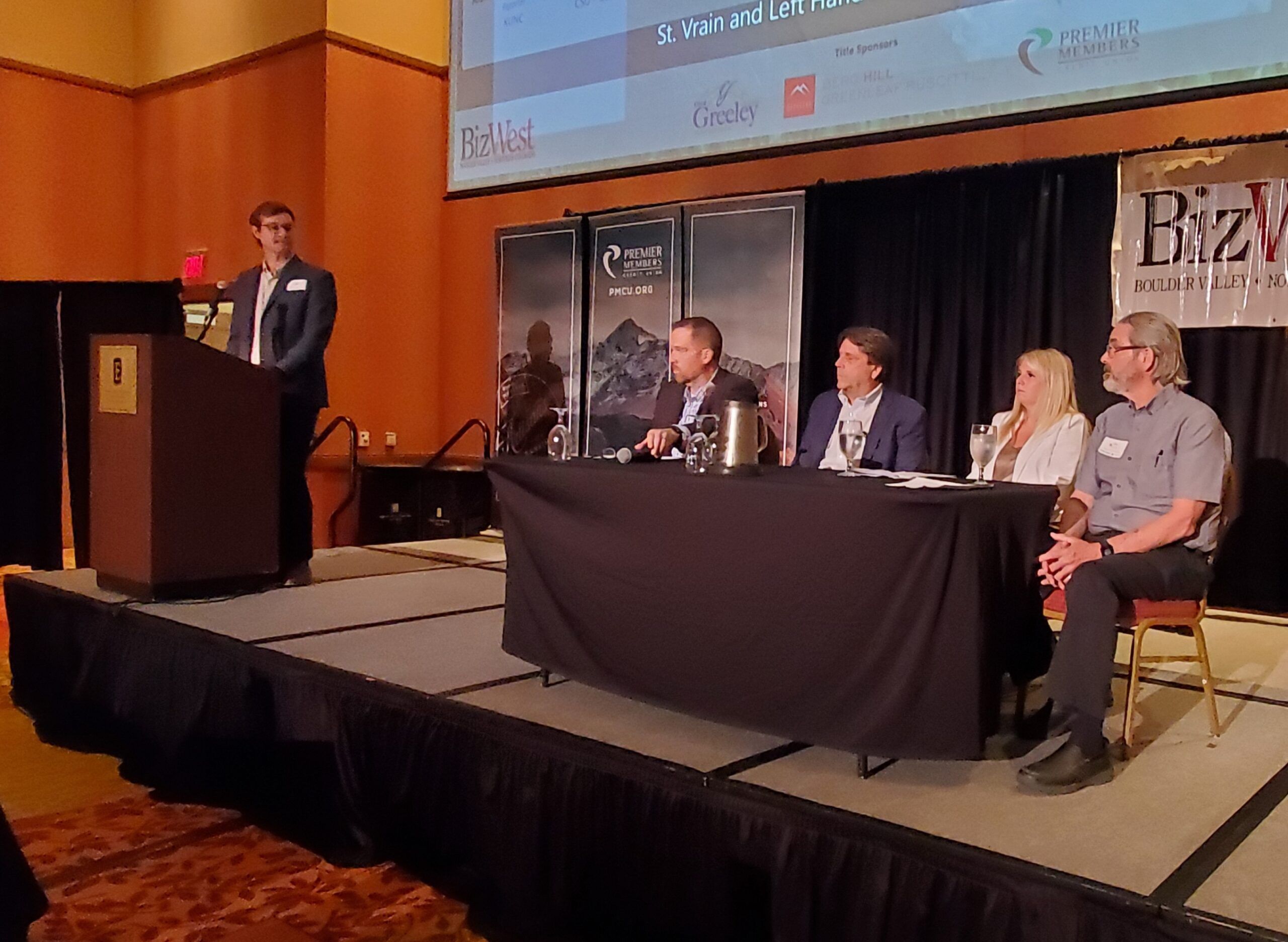Confluence: Lessons learned from September 2013 deluge, flood

LOVELAND — As the northern Front Range approaches the 10th anniversary of the September 2013 deluge and flood, water managers told BizWest’s Confluence — Colorado Water Summit on Wednesday that preparation for the next disaster is more important than prevention because it’s hard to predict what future events will look like.
“The reality is you cannot prevent flooding,” said John C. Tracy, director of the Colorado Water Center at Colorado State University. “Using the word ‘prevention’ puts in people’s minds that, oh, we have a plan in place so I can build a house here, I can put in offices or facilities there, I can construct some type of infrastructure to be more protected. The reality is, no, we’re not (protected). We never, ever, ever will be, and there has to be a recommendation that no matter what you put in place, no matter what physical infrastructure, no matter what land-use planning, there is always a risk of flooding.”
The lesson to be learned from such events as the South Platte River flood of 1965, the Big Thompson flood of 1976, the Lawn Lake flood of 1982, the Spring Creek flood in Fort Collins in 1997 and the September 2013 disaster, Tracy said, is that, “as we keep seeing, the outcome of all of these is ‘We think we got it,’ and then, ‘whoops, something else happens and we don’t have it.’
SPONSORED CONTENT
Prioritizing mental health in hospice care
Prioritizing mental health support alongside physical comfort, Pathways hospice care aims to enhance the quality of life for patients and their families during one of life's most challenging transitions.
“All you can do is be prepared,” Tracy said.”Using words such as ‘prevention,’ as ‘protection,’ as ‘flood control,’ those are anachronistic terms that really fell out of use in terms of discussing flood-hazard management 30 or 40 years ago. It really undermines communities’ and other regional responses.”
Instead, he said, the focus should be on “making sure when floods occur that we do the right things and are ready to do the right things and get everybody prepared. No matter what you do, you have the risk of being flooded. Are you prepared for it, and are you ready to respond to it?”
The Sept. 11-15, 2013, deluge and flooding swamped the region with up to 18 inches of rain, and the resulting flooding covered 4,500 square miles, left at least nine people dead and caused damage to private property and public infrastructure that ran into the hundreds of millions of dollars. Some of the scars are still visible nearly a decade later.
Boulder County was among the hardest hit, and Sean Cronin, executive director of the St. Vrain and Left Hand Water Conservancy District, noted that one result was public panic.
“The general public obviously gets pretty excited around these disasters, so we need to communicate regularly,” he said. “Oftentimes, the absence of information leads to tweets that someone claims to have first-hand knowledge of something, and that leads to chaos.
“’We actually had real-world examples where people thought Button Rock Reservoir was failing because water was going over the spillway,” he said, “when we all know that’s what it was designed to do.”
Cronin described the value of forming interagency connections.
“People that deal with water management typically don’t sit in recovery or emergency-management war rooms,” he said. “So get familiar with your emergency-management departments and insist that you be part of these war rooms where they’re going out and asking critical questions such as ‘Can the ditches be used to relieve flood waters?’ and ‘Who is the contact for the ditches?’”
Before the next disaster hits, he said, “build relationships now” with such groups as local, state and national lawmakers, the Fish and Wildlife Service, the U.S. Army Corps of Engineers and the Federal Emergency Management agency, “and attend their tabletop exercises where they actually go through drills on what to do in the event of a fire, flood or tornado. Who do they call? Who’s in the pipeline for communications? Build those relationships now. Those will pay huge dividends at the time of the disaster.”
Cronin also noted the value of stakeholder groups such as the Poudre River Coalition. Its executive director, Hally Strevey, said that coalition formed after the 2012 High Park Fire and became a 501(c)(3) nonprofit in May 2013, “so we were around right as the floods began” as well as during the Cameron Peak and East Troublesome fires in 2020.
One of its missions is building resilience, she said.
“The way that we define resilience is a watershed or a river that is able to bounce back and recover more quickly after a future disaster like a fire or flood. The idea with resilience in the lower watershed” — the area east of Interstate 25 including Windsor, Timnath and the Greeley area — “is opening up the river and restoring pieces of the natural state of the river so that when a future flood happens, it’s less impactful and we can recover more quickly.”
The low-lying town of Evans, along the South Platte river, “had tremendous burdens to start with,” noted John Barnett, former board president of the Middle South Platte River Alliance. The recovery has been “uneven,” he said, and areas that didn’t have as much money or as many resources struggled. But “places that had long-standing watershed coalitions or water conservancy districts did extremely well.”
Cronin said much of the work of recovery over the past decade “has been done on private property, so you may not see it. That’s a bit of a head game, where you take public dollars and put it into basically improving somebody’s backyard.
“But there are visibles,” he said, citing Longmont’s “psychological reboot on people’s attitudes toward St. Vrain Creek.” A city that “had its back to the river” now is “facing the creek” and creating recreational opportunities such as trails and tubing. As a result of mitigation efforts, he said, the area along the river “has withstood high-water events, as it was designed.”
Asked by moderator Alex Hager, a reporter for KUNC radio, about the most-important lessons they learned about recovering from the 2013 flood, the panelists were succinct.
Said Cronin, “Don’t claim it’ll be done in two months.”
Said Tracy, “Prepare for the unexpected because you don’t know what it is.”
Said Strevey, “Collaboration with all stakeholders is key.”
Barnett’s summation may have been most prescient.
“Don’t try to control nature,” he said. “Nature bats last, and nature writes the rules.”


